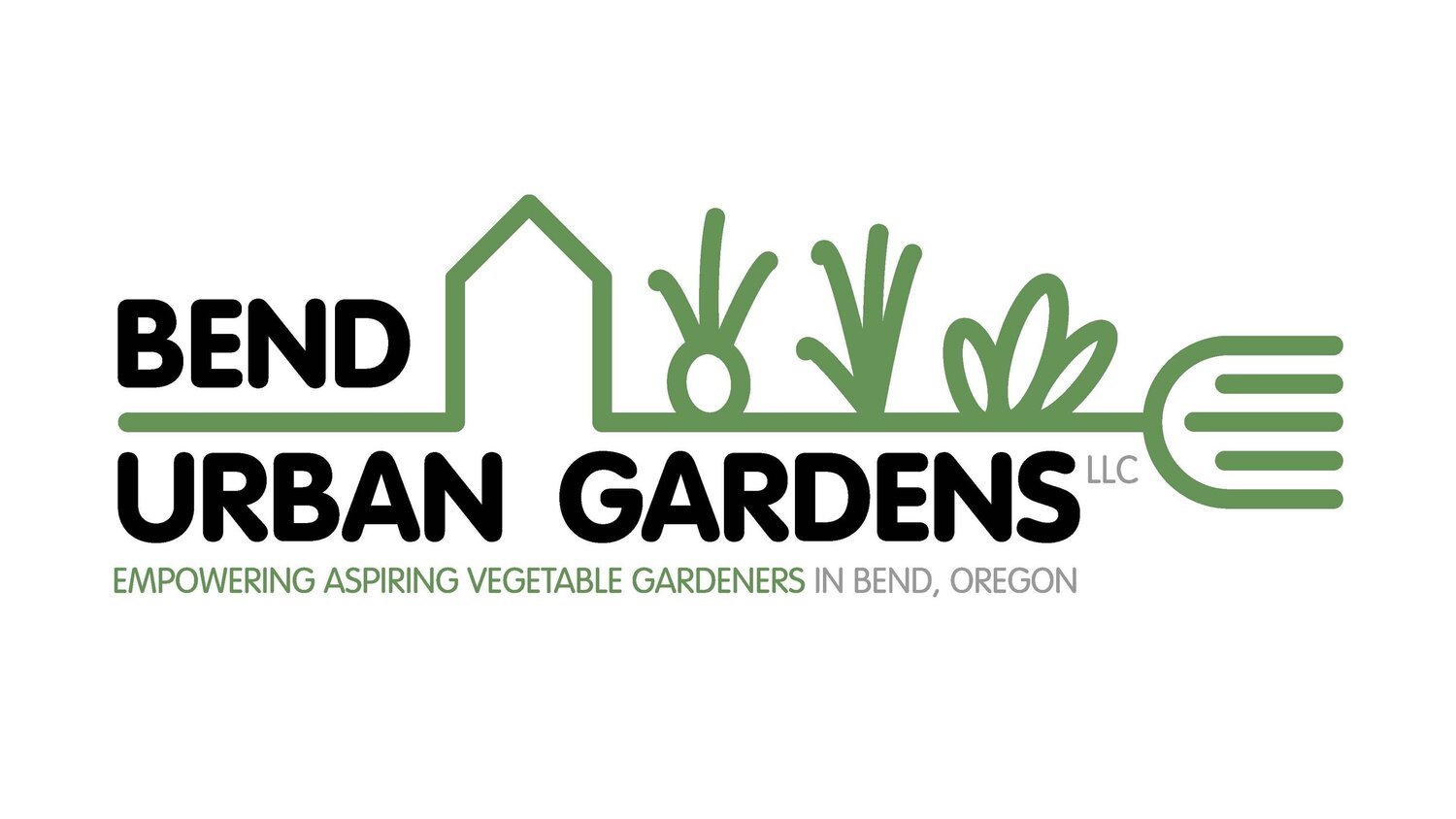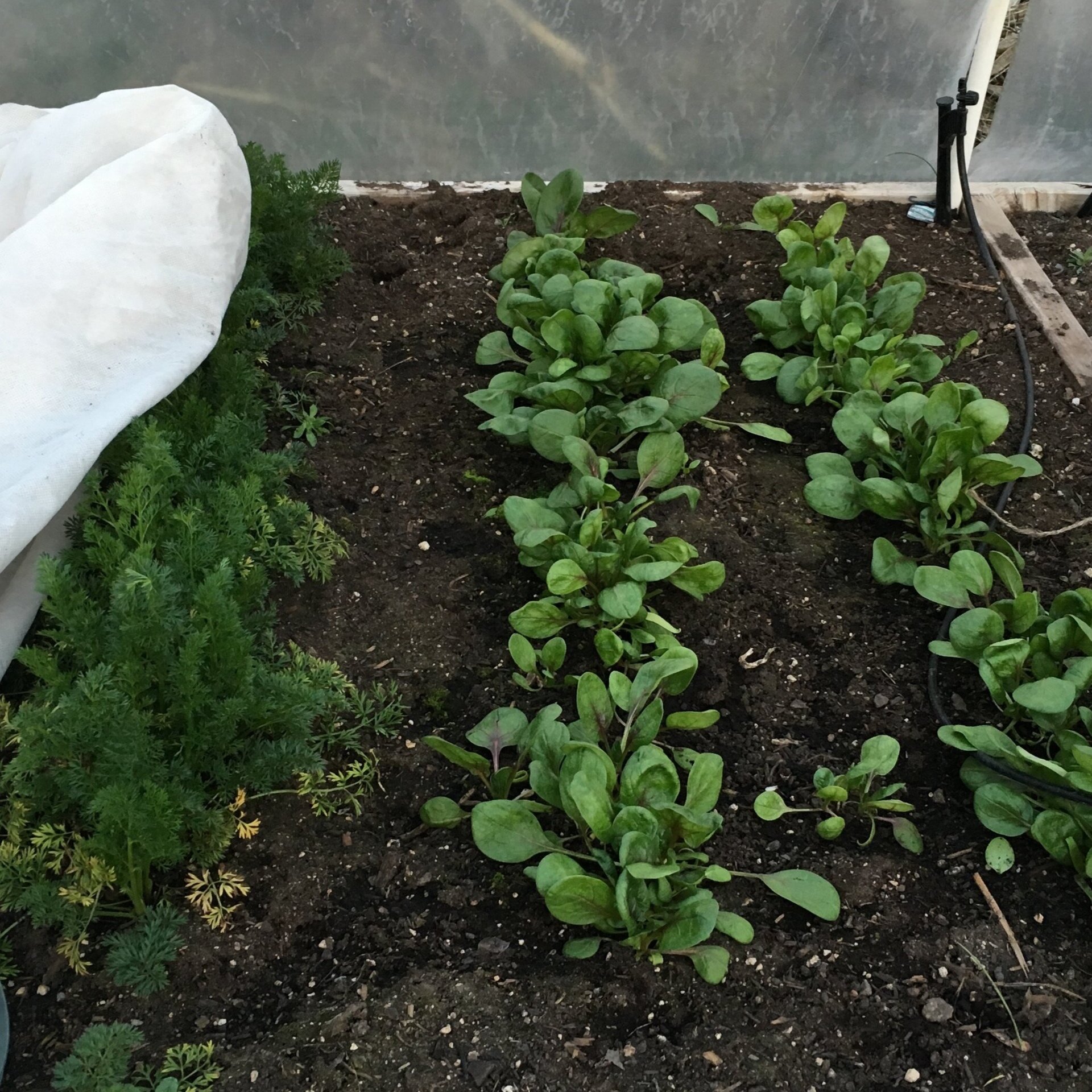Can you really grow vegetables in Bend, Oregon?
Yes, it is possible!
Romanesco cauliflower harvested in mid-September
Raised garden bed of greens harvest at the end of May
My enthusiasm for growing vegetables in the high desert is, understandably, often met with exasperation from shocked, frustrated, and discouraged Bendites who tell me, “You can’t grow vegetables in Central Oregon!” or “It’s too hard to grow vegetables here!” Maybe you’ve heard this too, or you’ve even uttered it yourself. Let’s break down a few of our main growing challenges:
Short growing season with frost any day of the year
The growing season in Bend is typically only 80-100 days and we can even experience frost in that window of time. Amy Jo Detweiler, OSU Extension Horticulturalist in Deschutes County, has looked back at historical records for the past 100 years. She reports that some years there are just seven days of 32 degree or colder temps during our typical growing season, but generally, we have about 20 days that dip down to 32 degrees or colder from May 1 - October 31. There are just nine days of the entire year where those historical records show the temperature in Bend didn’t fall below 33 degrees. Those days are July 10, 20, 24, 30, 31 and August 4, 10, 11, 12. We often use June 1 as our last frost date, but in reality, we don’t really have a reliable last frost date. This does make growing vegetables in Bend more challenging than in most other regions of Oregon.
Temperature swings
In our high desert climate, we often have huge daily day/night temperature swings. The ideal air temperature for growing plants to actively photosynthesize is 50-90 degrees. When it gets below 50 degrees, plants basically slow down their growth processes or stop growing. So, our big swings between day and evening temps do slow the continuous growth process that plants experience in more mild climates (like on the other side of the mountains).
Sandy, nutrient deficient soil
Our native soil tends to be very sandy and lacks a lot of organic matter, which means that it doesn’t hold onto water well or support vegetable crops with nutrients.
Ugh.
Early May spring greens in a covered raised garden bed
Well, fortunately, with smart garden design, most sites in Bend can overcome these challenges. Some key strategies for braving the challenges we face to grow veggies in Bend:
Set yourself up with the appropriate infrastructure to increase your chance of veggie gardening success. Compared to in-ground beds, raised beds typically warm up faster in the spring and retain heat in the fall. Fill your raised garden beds for vegetables with high quality soil mix that includes both top soil for good soil structure, and compost to provide nutrients and the ability to hold water for your plants.
Install a mini hoophouse (also sometimes called a cloche) over your raised garden beds to create an environment to direct sow seeds and transplant starts earlier in the spring. Cloches can protect frost sensitive plants in the fall or whenever the temps drop in the middle of summer. Developing a habit of closing your hoophouse at night can help minimize drastic temperature swings, sometimes even keeping the temperature above 50 degrees, and, of course, protecting your plants from frost when it does occur .
Be prepared with a crop plan that will not only maximize your growing space during our short season, but also include varieties that are appropriate for our region. OSU Master Gardener Pro Tip: to account for our unique growing conditions, add 14 days to the days to maturity listed in seed catalogs or on seed packets for annual vegetable crops. This means choose varieties that say they will be ready to harvest in 75-85 days. The fewer the better! This way, your plants will have a better chance of reaching maturity.
Covered raised garden bed, late summer/early fall sown crops protected in mid December
Spinach and carrots, ready to harvest in early March, overwintered in cloche and also protected with row cover
Yes, there are more challenges, too. I know you can think of many more besides the deer, rabbits, squirrels, rock chucks, birds, cut worms, and root maggots that are thrilled to eat our vegetables. We will share more about overcoming pest challenges in a future post.
The reality is that most people aren’t moving to Bend because it’s an easy place to grow a back yard urban garden or even transform their front yards into a high desert edible landscape because it is, indeed, more challenging to grow vegetables in Central Oregon than in most other places in the United States. However, for now, before you exclaim, “You can’t grow vegetables in Central Oregon!” do know that, when you are empowered to try to grow some of your own food, setting yourself up with raised garden beds, cloches or mini hoophouses, an appropriate crop plan, and even some garden lessons, will increase your chance for success in high desert vegetable gardening. Overcoming our growing challenges will make your successes that much more gratifying! Book a consultation with us and we can help guide you.





